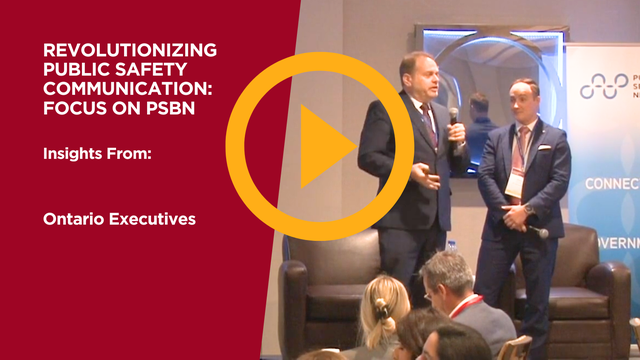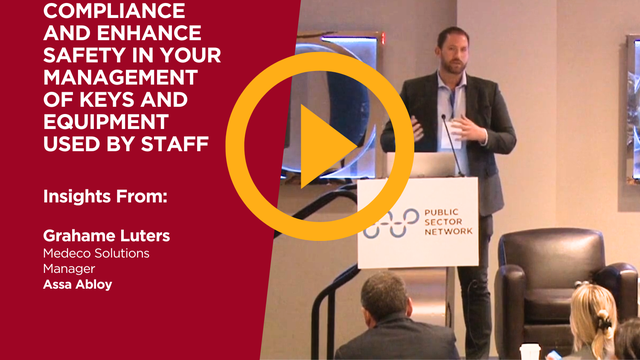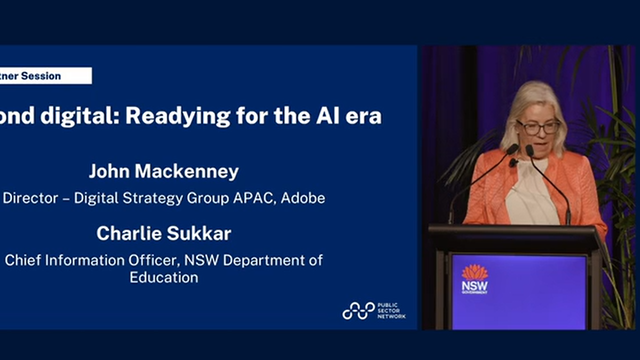

Empowering Our Community with Data
Empowering community data
Data has become the lifeblood of our modern societies. It allows us to access the world from our phones, and for better or worse, allows organizations to know about us through those interactions. Across the world, a lot of data is collected on a daily basis, but much of it is used internally and not always shared with the public. At York Regional Police in Ontario, they are trying to change that. Greg Stanisci, the Senior Manager of Business Intelligence and Data Analytics, says that they work under the philosophy that community safety is a shared responsibility, and therefore their goal is to provide greater transparency to the public, presenting data in a more clear and concise way.
To achieve this, they have created a Community Safety Data Portal, which is essentially designed to empower our community and members with data. After all, the current trend across the globe is to democratize data, which means making it more simple and informative to the average person. The idea is to ensure that everyone in the community has access, not only the frontline officers, by empowering the people who live in our community to make better decisions. After all, the York region has got nine municipalities, nine different mayors and nine different political groups to work with, so it is not always simple to get a read on what is going on. The idea of a data portal is to ensure that when it comes to crime and community safety data at least, there is a single version of the truth, because if you can’t trust the data then you will lose the trust of the public. To establish that single truth, the police work with key stakeholder groups, particularly our citizens, as well as neighbourhood groups, businesses, universities, municipalities and other government organizations. In fact, before they even launched the portal, they had quite a number of internal and external consultations and discussions, which changed some of the nature of the portal. Ensuring our members see the same numbers, the same trends, the same statistics as the public also allows for greater trust.
Making the data usable and accessible
When designing the portal, after the consultations, the clear feedback was that it had to be easy to use, clear and easy to understand and navigate. Having good visualizations was also important, so the portal contains lots of diagrams, maps, dashboards and interactive elements. It also has Community Safety Alerts, which are focused around specific neighbourhoods, not just on the region as a whole. This was a major ask for our team and vendors to build, but it provides a customized and automated connection to the public. For instance, if there has been a murder, a homicide or some other significant crime in a particular area, these alerts get sent out and then the public can assist us in identifying suspects. Of course there is a lot of privacy involved and the alerts are pinned to the nearest intersection so they never identify a particular house, but for anyone who receives them, they can still be very helpful in getting people to understand those serious crimes and what may be affecting them.


Most importantly, everything has been designed so that it can be accessed without a statistics degree. The portal has lots of data, but it is easy enough to navigate, and built into it are crime prevention tips to help you better protect your own home, your property, your family. There are also tips about how to prevent cars being stolen, as well as training and crime prevention videos prepared by officers who have spent time in the field. The portal also has a security camera registry so anyone in our region can register their camera. That then helps officers identify suspects if they know which homes might have security footage. This is an efficiency for any investigating officer, but is also an extension of Neighbourhood Watch, as it makes citizens also feel safer and more protected in their own community. The portal also has desktop and mobile versions, making it easily transportable and accessible, and with the simple click of a button, all the information can also be translated into almost any language you can think of.
All of these features make the portal very usable for the public, which is clearly one of the most important priorities of such a service, but the biggest challenge with crime data is the data itself. Every country and often every district reports crimes in different ways. Whilst there is a Uniform Crime Reporting survey, it too has limitations, as well as millions of inputs. So the idea for the portal was to summarize them in the most simple way we could, reducing them down to what would make the most sense to the community. This took the longest time to create, especially since the team had to think carefully both about the security of our people and the victims.
Working together towards crime prevention
Ultimately, data and a portal of this nature can be very powerful, but neither of them are a match for a community filled with people who look out for one another. Even with all the tools, that is still the goal. However, for those who are interested in contributing to this goal using a portal, we’ve created lots of maps, including neighbourhood crime maps. These show the crime types and clicking on them can take the user to a media tip or other information that might help identify a suspect. The maps also help users better understand the status of their property and vehicles, and with that, there are also road safety maps, since it’s not just about crime. In fact, the York region has a staggering volume of collisions, so there are road safety alerts as well, including a list of intersections that have had the most number of collisions. For those who have a statistical mind-set, this may be affect their risk appetite.
For road safety as well as for crime safety, there are simple-to-use dashboards that only show the relevant information, and these dashboards can be customized. They can also be used for comparison purposes, including being able to see crime rates across our nine different municipalities. It shows raw data as well as crime summarized by population ratio, which is important since it is unfair to compare the larger municipalities to the smaller ones. The dashboards are customizable, but only to a certain extent. There are no crazy filters and only a few possible clicks available.
Despite the ease of the use of the portal and the dashboards, not everyone has the same level of technical understanding or ability to interpret or even see the information. As such, since the goal is to allow everyone to have access to the same data for crime prevention, we offer community safety data academy sessions on a regular basis. There are two levels of training; a simple understanding of how the portal works, and a more sophisticated program that delves into crime prevention and crime detection techniques using the tools. On top of all that, although the portal has been designed for everyone, not everyone will use it or access it. As such, York Regional Police also send out newsletters and community alerts so that ultimately as many people as possible can contribute to the safety of the region.
Featured Speakers:
Greg Stanisci, Senior Manager, Business Intelligence and Data Analytics, York Regional Police (ON)









































